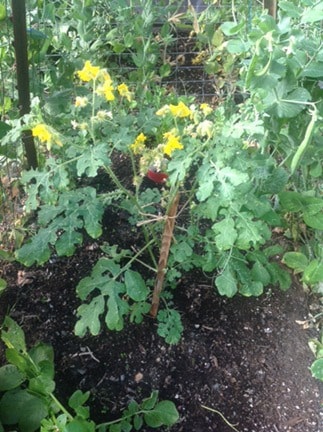The Cowichan Valley’s Morris Drew at first nurtured what he believed to be a watermelon plant that began growing on his property before the plant started sprouting sharp spines and spurs.
Morris said he looked online to identify the weird plant with the pretty yellow flowers and discovered that it was a buffalo-bur plant, a species of nightshade that can grow up to five-feet high, native to the U.S. and Mexico.
He said he learned that there is a mild poison in the spikes and burs that can cause some discomfort if people and animals are pricked by them, and even poison grazers like cows and horses if ingested.
“I dug it up and took it to the government office in Duncan for them to deal with,” Morris said.
“I have seen more of them around the community since I identified the one in my yard, and people should know that they can be really nasty.”
Rachelle McElroy, executive director of the Coastal Invasive Species Committee, said buffalo-bur is not considered invasive in B.C. and the coastal region at this time.
But she said it’s on a watch list that is reviewed annually, and is currently listed as a plant that should be eradicated as it is identified.
“To be considered invasive, a plant species must be identified as having significant negative impacts on society, economy and/or environment,” McElroy said.
“Buffalo-bur is not spreading rapidly at this time and is not considered as having significant negative impacts, but we’re certainly keeping an eye on it. We believe it has spread to this area in bird seed and vegetable products, especially tomatoes.”
McElroy said if people think they have buffalo-bur plants on their property, they should email a picture of it to the committee at info@coastalisc.com so it can be identified, and then it should be destroyed so it can’t spread.
She said the best way to deal with the plants is to burn them, but acknowledged that in areas where no burning is currently allowed, they should be bagged and sent to the local landfill.
